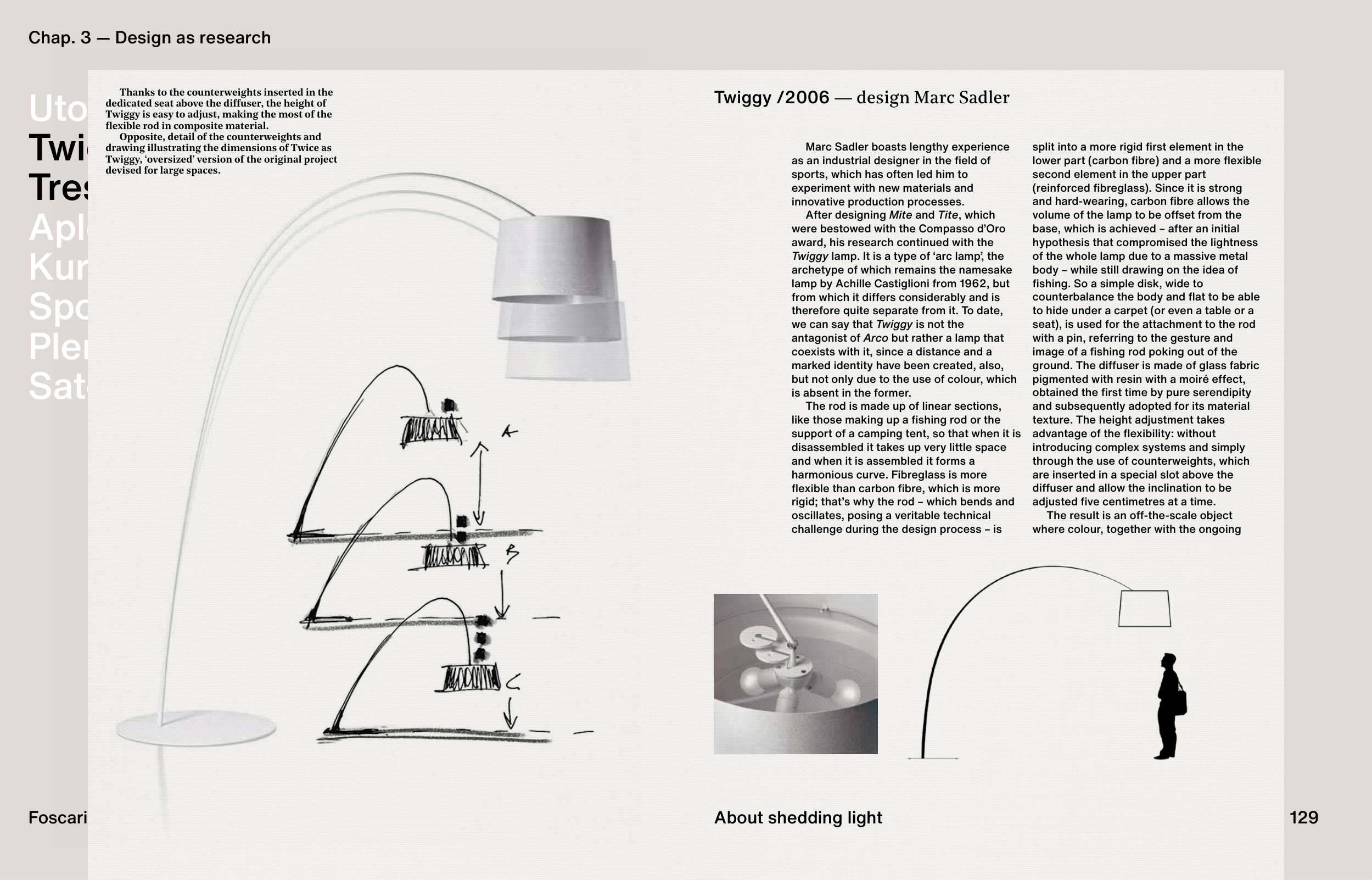129
Uto
Twiggy
Tress
Aplomb
Kurage
Spokes
Plena
Satellight
Foscarini
Chap. 3 — Design as research
Thanks to the counterweights inserted in the
dedicated seat above the diffuser, the height of
Twiggy is easy to adjust, making the most of the
fl exible rod in composite material.
Opposite, detail of the counterweights and
drawing illustrating the dimensions of Twice as
Twiggy, ‘oversized’ version of the original project
devised for large spaces.
Marc Sadler boasts lengthy experience
as an industrial designer in the fi eld of
sports, which has often led him to
experiment with new materials and
innovative production processes.
After designing Mite and Tite, which
were bestowed with the Compasso d’Oro
award, his research continued with the
Twiggy lamp. It is a type of ‘arc lamp’, the
archetype of which remains the namesake
lamp by Achille Castiglioni from 1962, but
from which it differs considerably and is
therefore quite separate from it. To date,
we can say that Twiggy is not the
antagonist of Arco but rather a lamp that
coexists with it, since a distance and a
marked identity have been created, also,
but not only due to the use of colour, which
is absent in the former.
The rod is made up of linear sections,
like those making up a fi shing rod or the
support of a camping tent, so that when it is
disassembled it takes up very little space
and when it is assembled it forms a
harmonious curve. Fibreglass is more
fl exible than carbon fi bre, which is more
rigid; that’s why the rod – which bends and
oscillates, posing a veritable technical
challenge during the design process – is
split into a more rigid fi rst element in the
lower part (carbon fi bre) and a more fl exible
second element in the upper part
(reinforced fi breglass). Since it is strong
and hard-wearing, carbon fi bre allows the
volume of the lamp to be offset from the
base, which is achieved – after an initial
hypothesis that compromised the lightness
of the whole lamp due to a massive metal
body – while still drawing on the idea of
fi shing. So a simple disk, wide to
counterbalance the body and fl at to be able
to hide under a carpet (or even a table or a
seat), is used for the attachment to the rod
with a pin, referring to the gesture and
image of a fi shing rod poking out of the
ground. The diffuser is made of glass fabric
pigmented with resin with a moiré effect,
obtained the fi rst time by pure serendipity
and subsequently adopted for its material
texture. The height adjustment takes
advantage of the fl exibility: without
introducing complex systems and simply
through the use of counterweights, which
are inserted in a special slot above the
diffuser and allow the inclination to be
adjusted fi ve centimetres at a time.
The result is an off-the-scale object
where colour, together with the ongoing
Twiggy /2006 — design Marc Sadler
About shedding light
129


